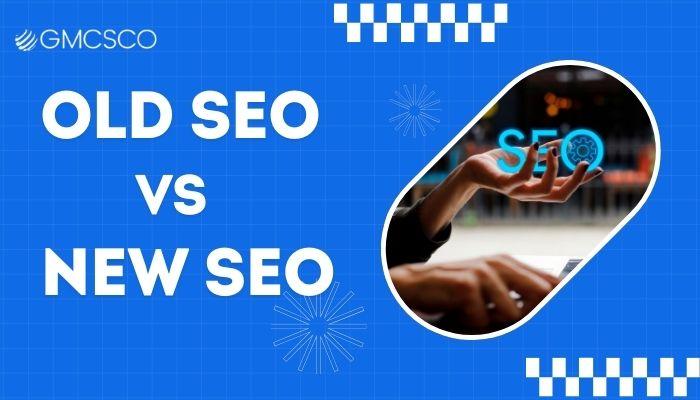1. Focus on Keywords: Then vs. Now
Old SEO: In the early days, SEO heavily relied on keyword stuffing, where marketers crammed as many relevant and irrelevant keywords into their content to rank higher on search engines. The belief was simple: more keywords meant better rankings. Often, this led to unnatural, poorly written content that was designed solely for search engines, not human readers.
New SEO: Today, the focus has shifted towards keyword intent and user experience. Modern SEO emphasizes the use of long-tail keywords that naturally fit into content and provide value to the user. The rise of semantic search has made search engines smarter, prioritizing content that answers user queries effectively over content that just includes specific keywords.
2. Content Creation: Quantity vs. Quality
Old SEO: Early SEO strategies prioritized content quantity over quality. The goal was to produce a large volume of content packed with keywords, regardless of the content's value or relevance to the audience. The belief was that more pages with more keywords equated to better rankings.
New SEO: Quality content is king in modern SEO. Search engines, particularly Google, now favor high-quality, valuable, and engaging content that answers users’ questions. Content must be original, well-researched, and written with the reader in mind. New SEO rewards websites that focus on delivering valuable information through blogs, articles, videos, and infographics, while penalizing content that is low-quality or overly promotional.
3. Link Building: Quantity vs. Authority
Old SEO: Link building in old SEO was all about quantity. The more backlinks a site had, the better. This led to practices like buying links, participating in link farms, and submitting to irrelevant directories, all to gain more backlinks.
New SEO: Now, link building is all about quality and authority. Search engines prioritize backlinks from high-authority, relevant websites rather than just counting the number of links. It’s more effective to have fewer links from reputable sources than to have hundreds of low-quality links. Guest posting, content partnerships, and building relationships with influencers are among the methods used today to secure high-quality backlinks.
4. Mobile Optimization: Optional vs. Essential
Old SEO: A decade ago, mobile optimization was not a priority. Most SEO strategies focused on desktop users, with little attention given to how a site appeared on mobile devices.
New SEO: With more than half of global web traffic coming from mobile devices, mobile optimization is now essential. Modern SEO requires websites to be responsive, ensuring that they look and function well on any device. Google’s Mobile-First Indexing, which ranks websites based on their mobile version, makes it clear that mobile optimization is a top priority for search engines today.
5. Technical SEO: Basic vs. Advanced
Old SEO: Early SEO practices focused on basic technical aspects such as meta tags, keyword density, and site structure. There wasn’t much emphasis on the speed of the website or advanced features like structured data.
New SEO: Technical SEO today is much more advanced, encompassing aspects like site speed, core web vitals, HTTPS security, and structured data (schema markup). Modern search engines like Google use sophisticated algorithms that consider these factors when ranking a website. Sites that are fast, secure, and well-structured are more likely to rank higher.
6. User Experience: Neglected vs. Prioritized
Old SEO: User experience (UX) was often neglected in old SEO strategies. The focus was on search engines rather than the end user. Websites could rank well even if they were difficult to navigate or visually unappealing.
New SEO: Today, user experience is central to SEO success. Search engines are designed to prioritize websites that are easy to navigate, visually appealing, and provide a seamless experience across devices. Modern SEO practices include optimizing page load speeds, ensuring mobile-friendliness, and creating intuitive navigation to keep users engaged.
7. Voice Search Optimization
Old SEO: Voice search didn’t exist during the early days of SEO. All search queries were typed, and optimization strategies were built around text-based searches.
New SEO: With the rise of voice assistants like Siri, Alexa, and Google Assistant, optimizing for voice search is now a crucial aspect of modern SEO. Voice search optimization focuses on conversational keywords, question-based queries, and featured snippets. Marketers now need to think about how people speak, not just how they type.
8. Local SEO: Basic vs. Detailed
Old SEO: Local SEO was a relatively simple practice, focusing on including a location-based keyword to help local businesses rank.
New SEO: Local SEO has become far more detailed and crucial for businesses targeting specific regions. Features like Google My Business (GMB) optimization, local citations, reviews, and localized content are now key components of local SEO strategies. Geo-targeting, schema markup for local businesses, and mobile optimization further enhance visibility for local searches.
Conclusion
The transition from old SEO to new SEO reflects the broader evolution of the internet and user behavior. SEO today is more holistic, focusing on delivering real value to users rather than simply catering to search engines. With user experience, mobile optimization, and high-quality content at the forefront, businesses that embrace modern SEO strategies are well-positioned to succeed in today’s digital landscape.
At GMCS Media Group, we specialize in the latest SEO techniques to help businesses rank higher and reach their target audience effectively. With over 10 years of experience, our team stays updated with SEO trends and employs strategies that drive results. Whether you're a local business in Bangalore or beyond, we help you stay competitive with modern SEO solutions.
Contact us today at +91-9513351353 and let GMCS Media Group boost your online presence with cutting-edge digital marketing strategies. Located in HSR Layout, Bangalore, we are your trusted partner for all your SEO and digital marketing needs.

Comments